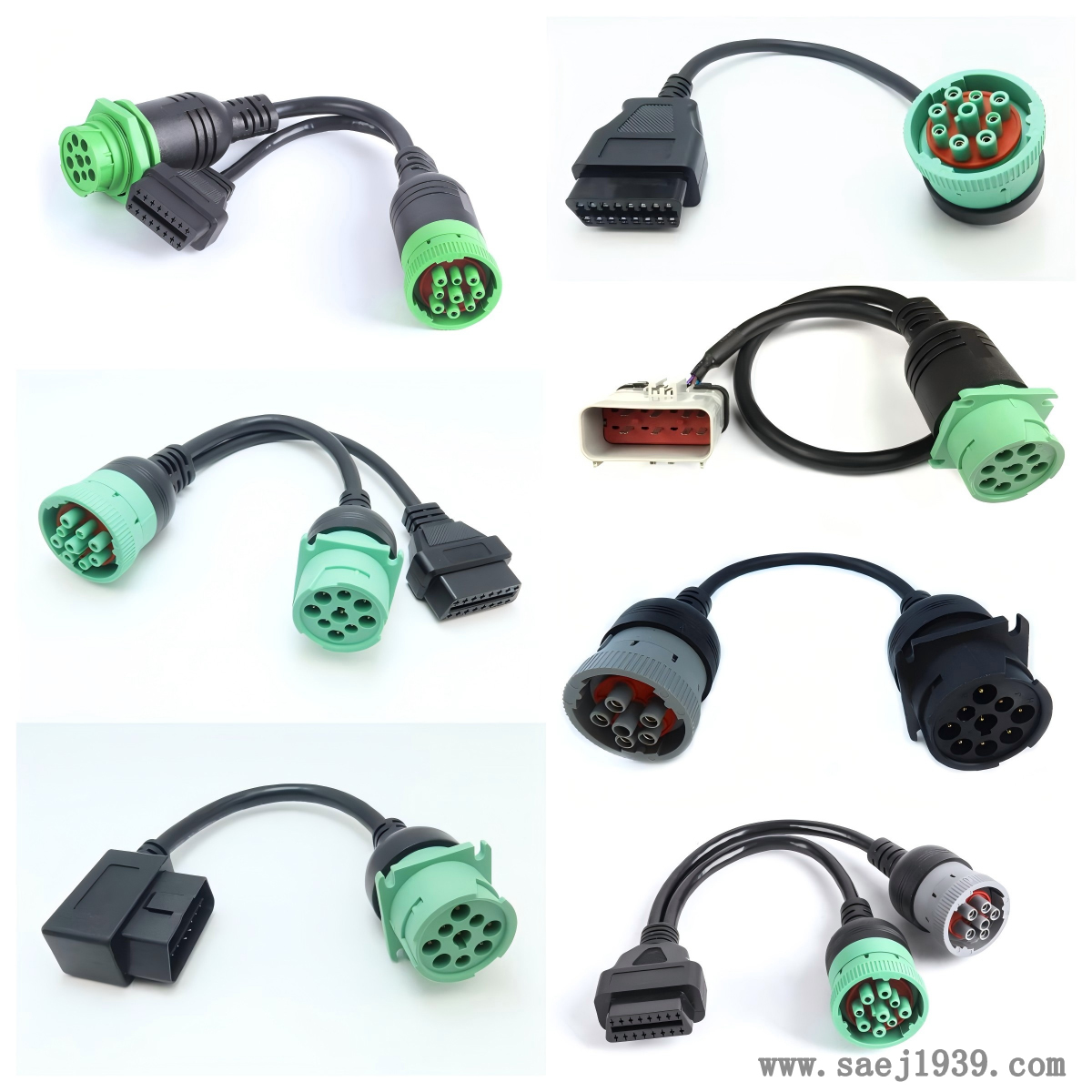What are the impacts of J1939 to OBD2 cable compatibility on vehicle systems?
The compatibility of cables has multiple impacts on vehicle systems, as follows:
Affects data transmission
Data accuracy: Compatible cables ensure accurate transmission of data between vehicle systems and diagnostic equipment or other external devices. For example, when using the OBD2 diagnostic tool to read vehicle engine data through the J1939 to OBD2 cable, if the cable compatibility is good, parameters such as engine speed, water temperature, and exhaust emissions can be accurately obtained, providing a basis for accurately determining vehicle faults. On the contrary, incompatible cables may lead to data errors or loss, resulting in biased diagnostic results.
Transmission speed: Suitable cables can meet the requirements of high-speed data transmission for vehicles. Modern vehicle electronic systems are complex and have a large amount of data, such as advanced driver assistance systems (ADAS) that require extremely high data transmission speed. Compatible cables ensure fast data transmission and enable the system to respond promptly. Incompatible cables may limit transmission speed, resulting in slow system response and affecting vehicle performance.

Affects device connectivity
Connection stability: Cables with good compatibility can be tightly connected to vehicle interfaces and external devices, reducing connection interruptions caused by looseness, poor contact, and other issues. For example, during vehicle operation, if the cable is not stably connected to the OBD2 interface, it may interrupt the ongoing vehicle data monitoring or diagnostic work, making it impossible to continuously obtain accurate data.
Multi device compatibility: Compatible cables can support multiple devices to be connected to the vehicle system simultaneously. In fleet management, a compatible J1939 to OBD2 cable can be used to simultaneously connect vehicle data collectors, remote monitoring devices, etc., enabling real-time collection and transmission of various vehicle data. If the cable compatibility is poor, it may not be able to support multiple device connections simultaneously, which limits the scalability of the vehicle system.
Affects system functionality
Complete functional implementation: When the cable compatibility is good, various functions of the vehicle, such as fault diagnosis, remote upgrades, performance optimization, etc., can be smoothly implemented with the help of external devices. Taking remote upgrade as an example, through compatible cables, vehicle manufacturers can transmit new software programs to the vehicle control system to achieve functional updates and optimizations. If the cables are not compatible, it may cause some functions to malfunction, affecting the overall performance and user experience of the vehicle.
System security: Compatible cables help ensure the safety of vehicle systems. It can work in conjunction with the vehicle's security mechanisms to ensure confidentiality and integrity during data transmission. For example, when a vehicle communicates with external charging facilities, compatible cables can ensure the safety and reliability of the charging process, preventing safety accidents caused by data transmission errors. Incompatible cables may have security vulnerabilities, making the vehicle system vulnerable to attacks and threatening the safety of both the vehicle and passengers.
Affects the lifespan of vehicles
Reduce system losses: Cables with good compatibility can enable various systems of the vehicle to operate in a normal electrical environment, avoiding damage to the vehicle's electronic equipment caused by voltage abnormalities, current fluctuations, and other issues due to cable incompatibility. A long-term stable working environment helps to extend the service life of vehicle electronic systems and reduce maintenance costs.
Preventing fault accumulation: Due to the compatibility of cables, data transmission and normal operation of system functions can be ensured, which can avoid the accumulation of vehicle faults caused by data errors or abnormal system functions. Timely and accurate fault diagnosis and handling can keep the vehicle in good operating condition and extend its overall service life.
We chat